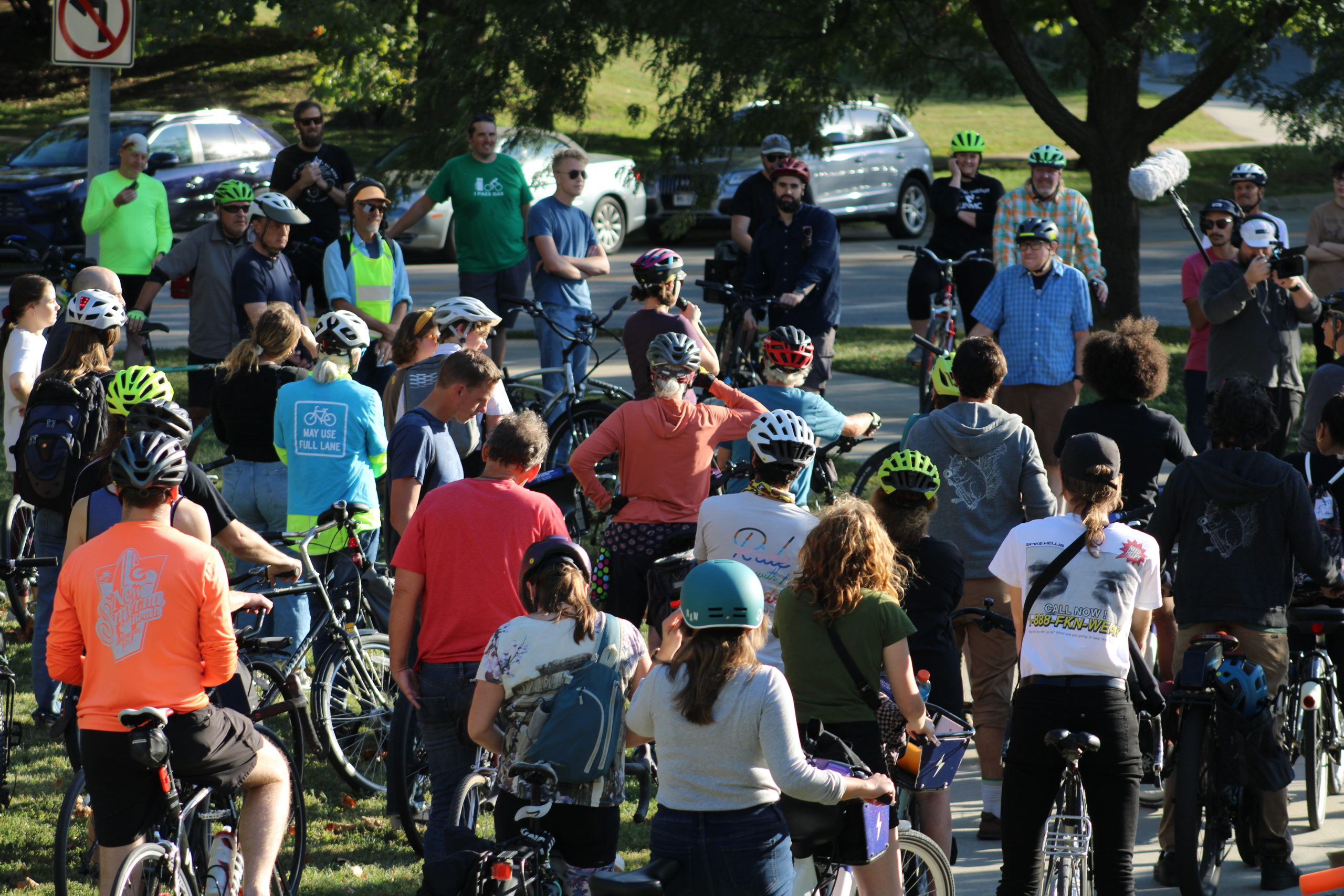We’ve all experienced it. You’re trying to cross the street, and a car stops right in your way. You thought you’d be able to cross in the relative comfort of a marked crosswalk, but instead, you’re forced further out into the intersection to make it around the vehicle. It’s a frustrating situation. It’s also illegal.
According to state law, people are not allowed to “stop, stand, or park a vehicle … on a crosswalk.”
Omaha’s municipal code says the same thing, almost word-for-word.
So, why are people blocking crosswalks? There are undoubtedly a number of reasons, but one stands out as surprising and easily preventable: the design of the intersection incentivizes people to stop their vehicles directly on the crosswalk by placing the sensor for the traffic signal there. If drivers want the light to change, they actually need to park on the crosswalk for the sensor to register that their vehicles are there.
If you want to know more about how the induction loop sensors work, you can find information here, but for our purposes it’s just helpful to know what they look like. If you see a cut in the pavement that looks like the diagram below, it’s most likely a sensor for a traffic signal.
Once you recognize them, you’ll see them everywhere. Unfortunately, in Omaha they are often in the middle of crosswalks.
Here’s an example of one at Happy Hollow and Leavenworth…
…and another at 40th and Cuming…
…and one more at 52nd and NW Radial.
This is a ridiculous and unsafe practice that defeats the purpose of marking a crosswalk. Let’s phase it out. We can do better.









I think its worth noting that this is kind of a chicken and egg situation. These loops are, in fact, located in advance of the stop bar (within the cross walk), but often it is to catch the folks who would be stopping there anyway. It’s a stretch to say loops are here to promote a person stopping in the crosswalk.
It’s also worth noting that there are almost certainly two or three loops behind the crosswalk to catch the drivers that stop in the correct location. I’m not sure about the specific locations mentioned here, but as a general practice the bulk of the loops are behind the stop bar and out of crosswalk.
That said, this is a HUGE pet peeve for me and completely agree that some effort should be done to curb this practice. As I’m not sure the average driver even knows how the signal is actuated or where exactly to sit to do so (other than the cues from the pavement markings), eliminating loops in the crosswalk may not be the most effective approach. It wouldn’t hurt, but I would think an education effort would be as, if not more, effective in mitigating this problem.
Hi Chris, thanks for the comments. We aren’t suggesting that the people installing the sensor loops are doing so with the goal of getting people to stop in crosswalks. It’s just that drivers are rewarded for doing something we’d rather not have them doing. We want the cars out of the crosswalks, so it seems like a good idea to stop rewarding bad behavior.
An educational campaign could definitely be helpful. Maybe we could move all the sensors back and then make sure everyone knows that the sensors are behind the stop bars.
Yikes, that retrofit would be expensive. Signage would cost money, too, but it’d be cheaper than digging up all the intersections. I mean, I’d love to see it happen but the city’s pols will have heart attacks if you suggest that. Aren’t there some less expensive approaches? Work with local news media and law enforcement, Driver’s Ed courses (if there is such a thing these days), maybe even put small posters in grocery store cart baskets where shoppers can’t miss them? Just freewheeling here…
Wow, you know, as a driver I’ve figured out that there’s a sensor plate somewhere, and have inched forward to trip an extra-long stop light – now I’ll know what to look for and NOT do that any more! This is indeed a stupid design policy. Has someone notified the city streets designers?
I was able to get stop lines installed at 72nd and Dodge and it has helped immensely. Now most motor vehicles stop at the line so there is a designated place for pedestrians to cross. Wonder how stop lines would help at 52nd and NW Radial. (along with a sign or two.) The City is reluctant to put up too many signs because they say people don’t read them and it adds to the clutter. A clear stop line would be great! (in addition to education)